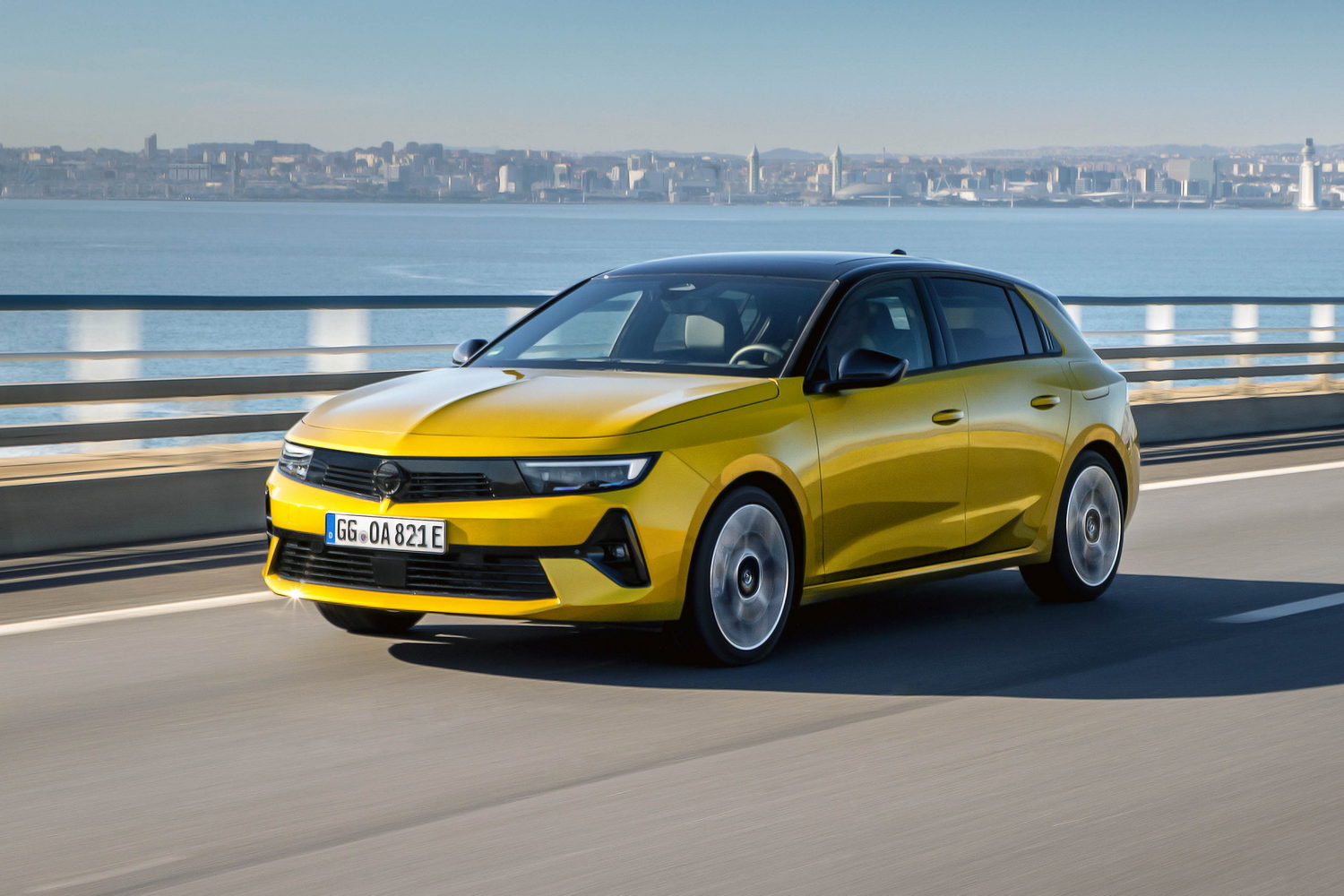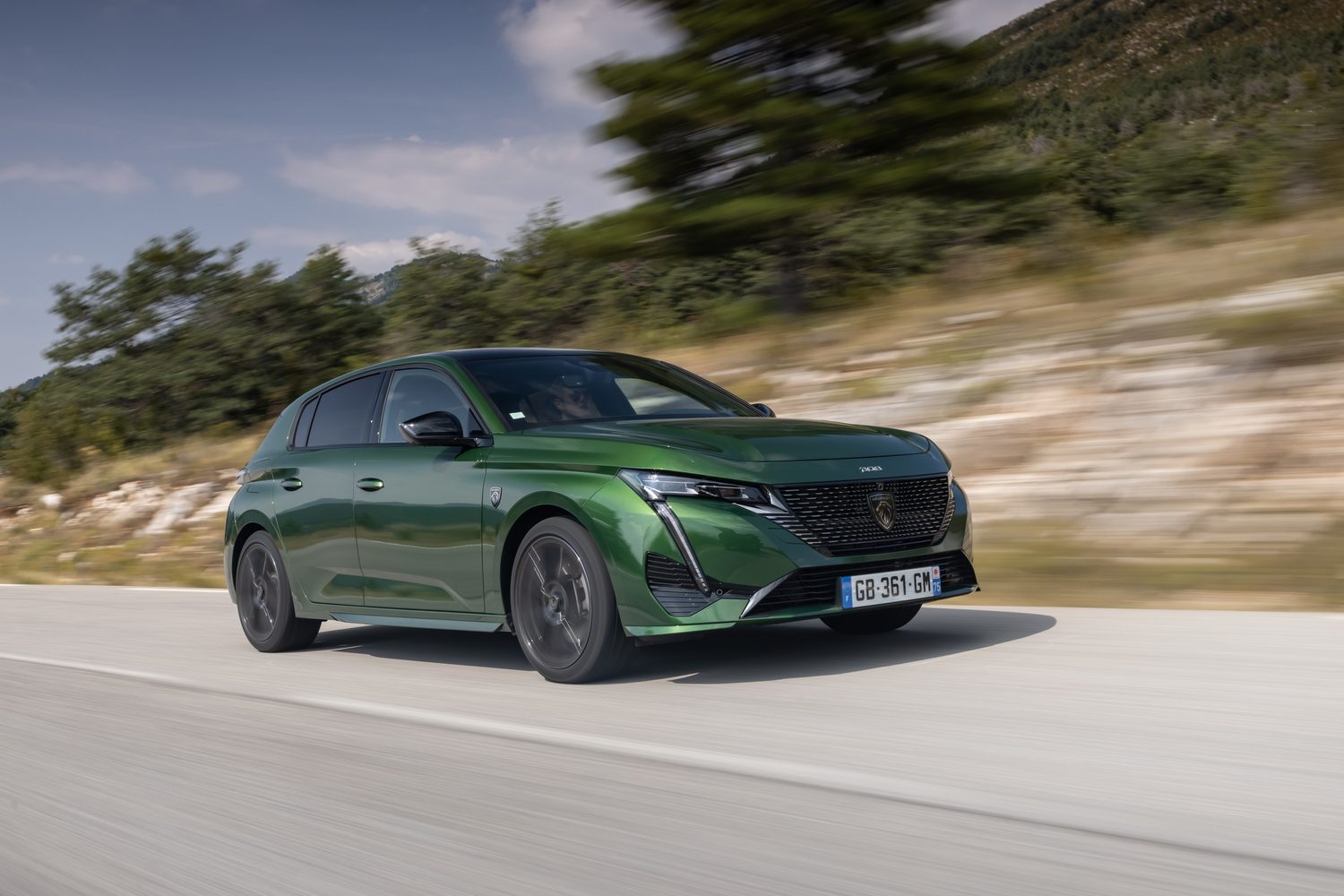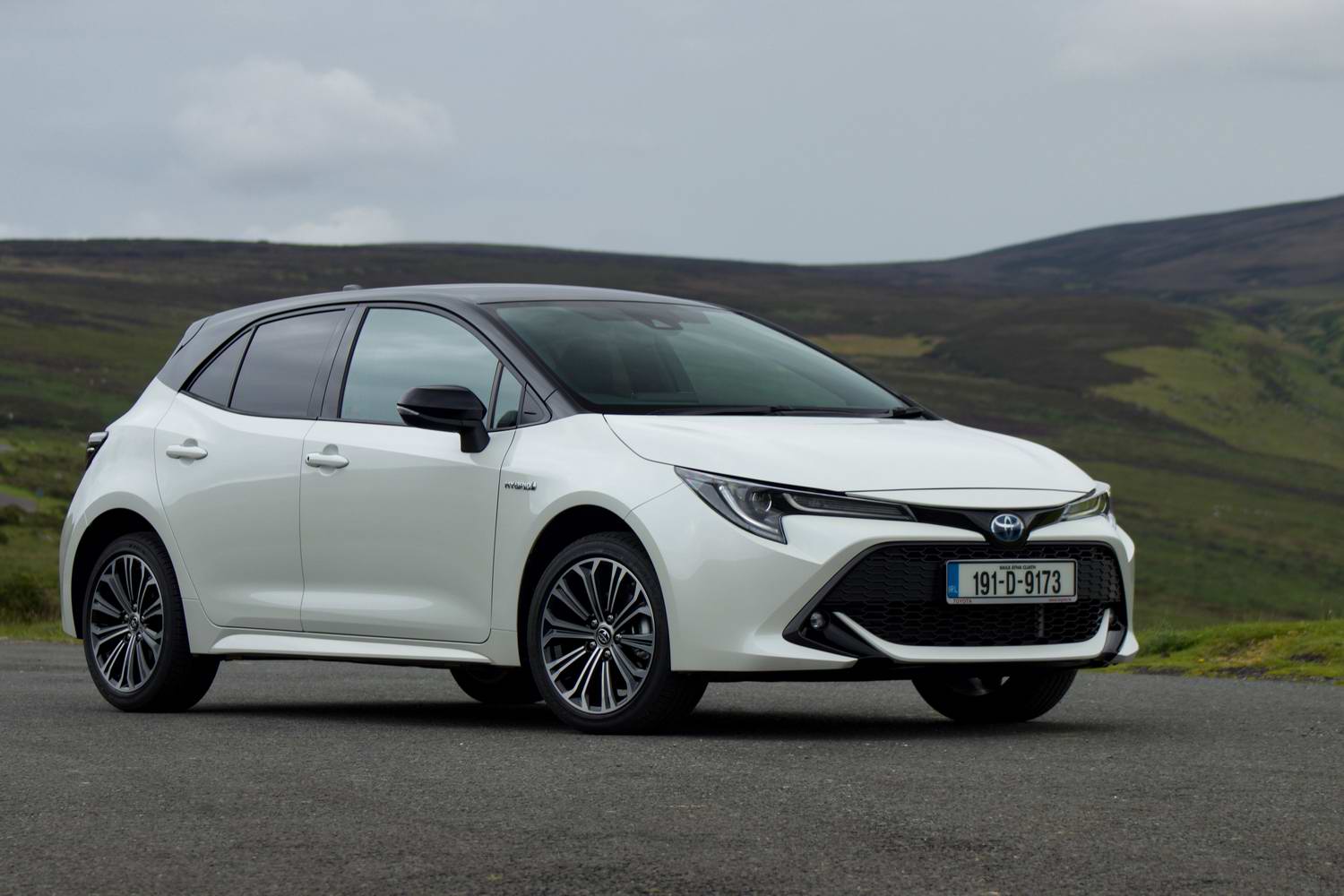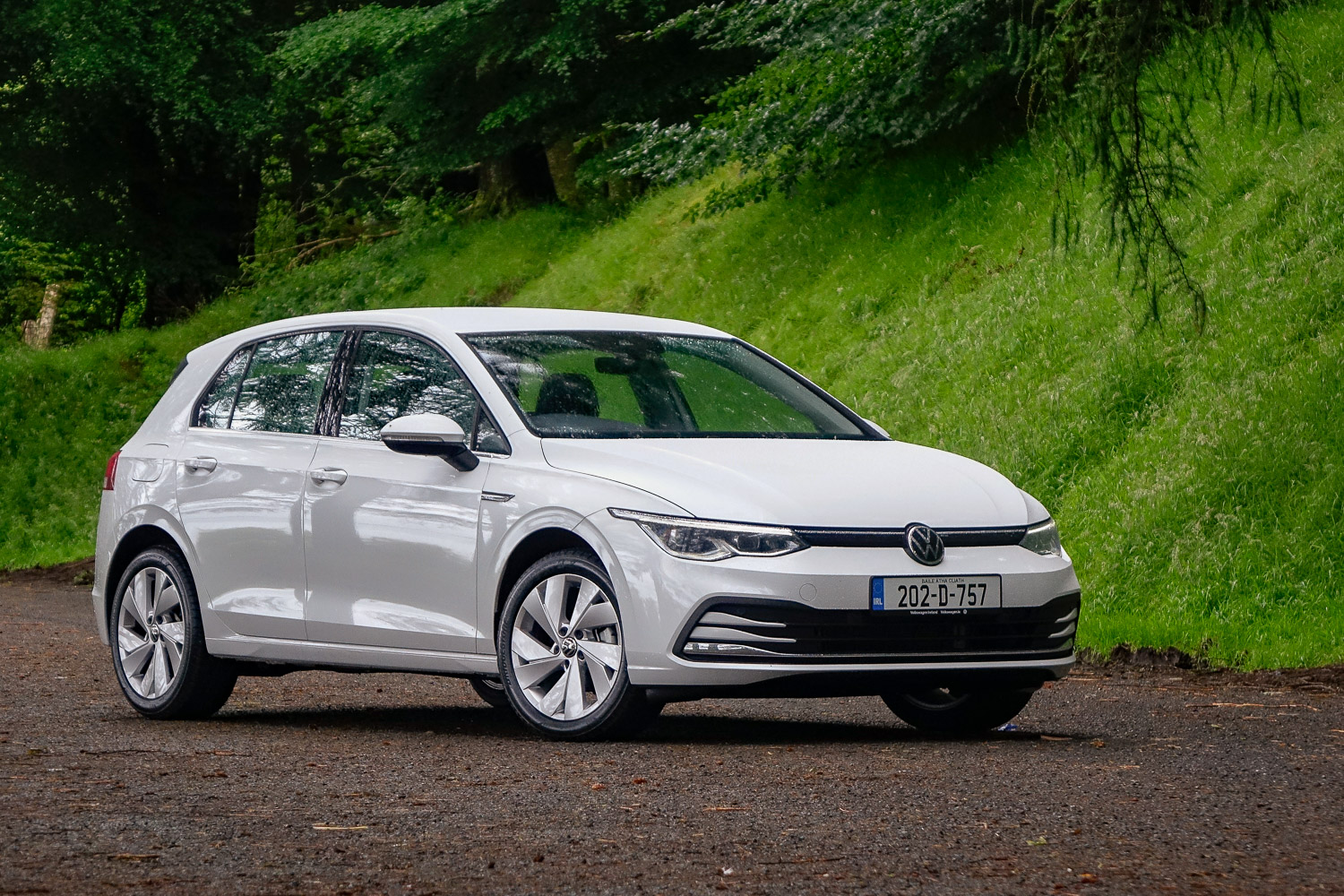Since being enveloped by Stellantis Opel has been on a rehabilitation programme that has seen it become profitable and shake off the dowdy styling of its GM days. Once the German also-ran, can the Astra now genuinely position itself as an alternative to the once mighty Volkswagen Golf?
In the metal
For hatchbacks to stand any serious chance of clawing back ground from the relentless onslaught of crossovers and compact SUVs they must reinforce practical appeal with a level of desirability beyond what has gone before. This sixth-generation Astra successfully pulls this off, exemplifying the step change in design Opel initiated with the current Corsa and Mokka. From the distinctive 'Vizor' grille to the crisp horizontal LED lighting signature and 'compass line' that
runs through the centre of the bonnet, the Astra is a looker even in more modest specifications.
A low nose and cab-rearward profile presents a dramatic silhouette, yet the Astra is a negligible 4mm longer (if 51mm wider) than its predecessor. There's a nod to the Opel Kadett D in the shape of the C-pillar and the contrasting black roof (standard on some specification grades) serves to give the appearance of a reduced overall height. Slim rear lights form an impressively tight fit with the tailgate due to its thermoplastic construction and in keeping with current trends the Astra name is spelled out across the back.
Boot capacity is 422 litres, dropping to 352 litres in this plug-in hybrid model on account of the battery pack underneath. An aperture of just over one metre ensures easy access, and there's an estate variant coming later in 2022 if you need greater load lugging capacity.
The Astra's interior reflects a precise and Germanic aesthetic of clean lines and flat surfaces. Opel refers to it as a visual detox, stripping away superfluity and distilling design down to an end product that is stark and modern. The digital 'Pure Panel' dashboard display comprises two 10-inch screens that are crisp and clear, while the native infotainment system is a further improvement on what went before. Apple and Android wireless connectivity options are on hand along with up to three USB-C charge ports and the availability of a wireless charging pad.
As the plug-in hybrid model has an automatic transmission, this Astra gets a small rocker switch inset in the centre console, ensuring a flat top surface. Use of a glossy piano black finish for the centre console is the only blot on the cabin's copybook as it was already looking tarnished with swirl marks on our factory-fresh test cars, so this aspect is unlikely to age well given its location.
An angled bank of physical buttons at the infotainment screen's base allows for easier adjustment of volume and cabin temperature without taking your eyes from the road to interact with a touchscreen system. Opel's new three-spoke steering wheel is pleasingly thin, almost elegant in its appearance and hosts multifunction controls that are tightly packed but equally distributed across the range of an average thumb. Ample adjustment for reach and rake combined with a wide range of seat settings make finding a suitable driving position a cinch.
Even taller passengers will find it comfortable seated in the rear once they stick to the outer seats where there is reasonable head- and kneeroom. Only the central position is compromised due to the console and front seat rails that encroach on foot space.
Driving it
Setting off with a fully charged battery the Astra can, Opel says, provide up to 74 kilometres of electric driving in a city environment, while the official WLTP figure is 60 kilometres. That puts it in the realm of what is now expected from a plug-in hybrid of this size. How you drive the Astra will have an effect on that battery range, especially if you drive on the motorway where chances of energy recuperation are reduced. The 110hp electric motor can solely propel the car at up to 135km/h, so brief motorway journeys both home and abroad can be done without calling upon the 1.6-litre petrol engine. On one mostly motorway journey we covered 41 kilometres and arrived at our destination with 17 per cent (an indicated six kilometres) remaining in the battery.
Performance from the electric motor alone is comfortably sufficient for the Astra, especially in an urban setting. Moving away from rest is perfectly smooth and at higher speeds any sudden request for power is met without fuss or hesitation. Installation of acoustically optimised front side windows goes some way towards quelling unwanted sounds such as wind noise at higher speeds, making this Astra impressively quiet. Driving at lower speeds with the electric motor engaged delivers a serene EV experience, which bodes well for the fully electric Astra-e due in 2023.
That first-rate sound suppression means that when the four-cylinder petrol engine sparks into action it does so discreetly. In fact, at slower speeds there are instances when the speedometer switching from blue to white font is the clearest indication that the switchover has taken place. Slipping into the hybrid mode will still see the Astra try to avoid using the combustion engine wherever possible, meaning engine-off coasting and plenty of effort to recuperate spent kinetic energy. There is also a B mode that increases this action.
Suspension setup plays a fundamental role in how sweetly the Astra drives, providing a ride quality that is engaging and capable of enthusiastic driving without seemingly overly stiff. Bumps are nicely absorbed without unsettling the car and a linear steering setup provides safe, predictable handling. There is little in the way of body lean to speak of which gives the Astra a balanced behaviour when tackling frequent direction changes along sinuous stretches of road.
Toggling into Sport mode will apply some predictable changes without feeling as contrived as some competitor systems, yet the best performance from this Astra comes in its normal mode - perhaps the slightly punchier 225hp plug-in hybrid coming later in the year will add some more spice and adaptive suspension to better cope with the extra weight of the hybrid system.
What you get for your money
When the Opel Astra arrives in Ireland it will be offered across three specification grades, starting with SC, a mid-level SRI and the range-topping Elite. Three powertrain options will also be available comprising a 1.2-litre petrol with 130hp, a 1.5-litre diesel also with 130hp and the 180hp plug-in hybrid model tested here. Later in 2022 a second plug-in hybrid model with 225hp will join the ranks. Irish pricing details will be announced ahead of the car's arrival in June 2022.
Summary
To say that Opel has upped its game with the Astra would be an understatement. From its design to how it drives, the new Astra has taken a huge stride forward. An abundance of technology, both for convenience and driver assistance, added to a clear improvement in interior quality signifies a changing of the guard in the German hatchback hierarchy.
























